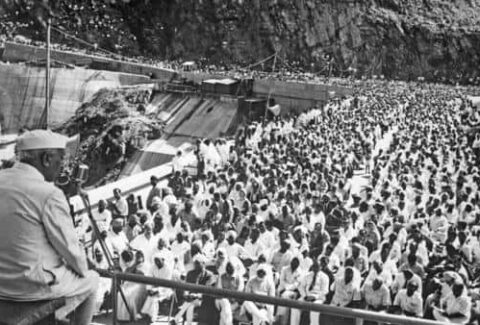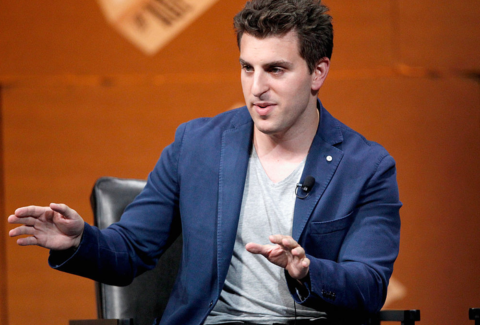The funniest book on endangered species
The funniest book on endangered species
I changed my book reading diet and went retro last month.
Welcome to my content recommendations and reviews for Oct-21: a book, a podcast, articles and a couple of videos.
Let’s get started.
1. Book
a. ‘Last Chance to See’ by Douglas Adams and Mark Carwardine
In my podcast interviews I often ask my guests about books that influenced them. Praveen Gopal Krishnan of The Ken recommended this book to me.
I knew of Douglas Adams and the iconic ‘Hitchhikers Guide’ series, but had never gotten around to reading it. (I’d given up reading fiction a long time ago).
But then this was non-fiction… and it was humour. Two words you don’t often see in the same sentence.
I read it – and I loved it!
Here’s the premise of the book. In 1985, the BBC decided to make a documentary series called ‘Last Chance to See’ about endangered species on the planet.
I guess it was a time when humankind was becoming more aware of the destruction they had caused on the planet, especially to exotic plant and animal species.
From the book:
For millions of years, on average, one species became extinct every century. But most of the extinctions since prehistoric times have occurred in the last three hundred years. And most of the extinctions that have occurred in the last three hundred years have occurred in the last fifty. And most of the extinctions that have occurred in the last fifty have occurred in the last ten. It is the sheer rate of acceleration that is as terrifying as anything else.
To raise awareness about this crisis, the BBC wanted to create rich, deep profiles of some species which were on the brink of extinction. These included the nocturnal aye-aye lemur in Madagascar, the flightless kakapo in New Zealand and the fearsome komodo dragon in Indonesia. For leading this mission, they chose a highly experienced zoologist named Mark Carwardine.
What was remarkable was who they decided to pair him with.
Not a botanist, not a local expert and certainly not a celebrity to add glamour value.
They chose a storyteller.
Douglas Adams – who had till then only written humourous science-fiction – was an inspired choice. For one, he was a passionate environmentalist. Two, despite being a successful and affluent writer, he didn’t mind the rigours of travel to remote corners of the planet where one had to sleep on hard floors and endure rickety forms of transport. And three, it helped that he came with no prior knowledge of the animal kingdom. That meant applying a fresh set of eyes.
As he writes in the beginning:
My role for which I was entirely qualified, was to be an extremely ignorant non-zoologist to whom everything that happened would come as a complete surprise.
Adams may not have known anything about the animal kingdom. But boy, did he knew a thing or two about telling a good story.
Let’s explore some of the storytelling techniques (with examples) he used in the book.
Storytelling techniques used in the book
1. Contrast
Adams does a masterful job of using contrast. For instance (contrast highlighted in bold):
Mark, who had gone out ahead to make the arrangements for the expedition, met me for the first time there and explained the set-up.
“Everything’s gone wrong,” he said.
I also loved this:
‘Could we perhaps take a snake bite detector kit with us to Komodo?’
‘Course you can, course you can. Take as many as you like. Won’t do you a blind bit of good because they’re only for Australian snakes.’
‘So what do we do if we get bitten by something deadly, then?’ I asked.
He blinked at me as if I were stupid. ‘Well what do you think you do?’ he said. ‘You die of course. That’s what deadly means.’
And this:
If you took the whole of Norway, scrunched it up a bit, shook out all the moose and reindeer, hurled it ten thousand miles round the world and filled it with birds then you’d be wasting your time, because it looks very much as if someone has already done it.
Fiordland, a vast tract of mountainous terrain that occupies the south-west corner of South Island New Zealand, is one of the most astounding pieces of land anywhere on God’s earth, and one’s first impulse, standing on a cliff top surveying it all, is simply to burst into spontaneous applause.
2. Striking analogies:
For instance:
Richard had trained in the Philippines, working to save the Philippines monkey-eating eagle, a wildly improbable-looking piece of flying hardware that you would more readily expect to see coming in to land on an aircraft carrier than nesting in a tree.
And this:
Island ecologies are fragile time capsules. So you can imagine what happens when a mainland species gets introduced to an island. It would be like introducing Al Capone, Genghis Khan and Rupert Murdoch into the Isle of Wight – the locals wouldn’t stand a chance.
Rupert Murdoch, hehe.
And this one:
As zoologists and botanists explore new areas, scrabbling to record the mere existence of species before they become extinct, it is like someone hurrying through a burning library desperately trying to jot down some of the titles of books that will now never be read.
Uff, that’s an evocative analogy.
3. And that humour
Here’s his description on being on the road in China (remember, this is the late 1980s):
What I could never get used to, however, was this situation: the vehicle in front of you is overtaking the vehicle in front of him, and your driver pulls out and overtakes the overtaking vehicle, just as three other vehicles are coming towards you performing exactly the same manoeuvre. Presumably Sir Isaac Newton has long ago been discredited as a bourgeois capitalist running dog lackey.
Some of the best laughs are from when he sees the humour in stressful situations. For instance:
The Komodo lizards are also big. Very big. There’s one on Komodo at the moment which is over twelve feet long and stands about a yard high, which you can’t help but feel is entirely the wrong size for a lizard to be, particularly if it’s a man-eater and you’re about to go and share an island with it.
And another one:
He was tall, dark and laconic and had a slight nervous tic. He explained that he used to be just tall, dark and laconic, but the events of the last few days had rather got to him.
At several points in every chapter, I was laughing out loud. That’s not something I can say for most of the books I read.
‘Last Chance to See’ is a hilarious, warm and insightful read. I’d highly recommend it for young readers too. (Fair warning: It does have references to animal mating, so older than 15 probably?).
Small quibble: I felt there was some subtle condescension – to put it mildly – especially in the chapters featuring China and Africa. We need to remember that this was written in the 1980s though. Perhaps if he was writing in a different time, he would have been more cognizant.
(PS: For those inclined to watch rather than read, here’s a video of Adams giving a talk about this book).
2. Podcast
a. The Seen and the Unseen by Amit Varma
If you are readers of this newsletter, it is highly unlikely that you haven’t heard of Amit’s stellar podcast.
It is India’s most popular weekly podcast.
In the show, Amit interviews leaders from across fields and does a deep-dive into their upbringing, their philosophy and their major achievements.
In Amit’s own words, ‘The Seen and the Unseen features long-form conversations that aim to give deep insights into the subjects being discussed. Timeless and binge-worthy‘
Amit specialises in really long, meaningful conversations. Here’s the guest list and episode duration for his last 5 interviews:
– Manu Pillai (3:22 Hours)
– Barkha Dutt (2:35 hours)
– Josy Joseph (3:09 hours)
– Uday Bhatia (2:38 hours)
– Prakash Iyer (2:53 hours)
Amit leaves no question unasked, no topic unexplored in his conversations.
I love how he would ask a simple question – say about the guests’s childhood, wait for the guest to give a long, comprehensive response and then pick separate threads from elements of that response to weave individual conversation topics of their own.
If you want to know more about a particular leader or topic, pray that Amit Varma has interviewed them!
3. Articles
a. ‘#ROTD’ by Saurabh Devendra Singh
In my son’s school, there was a concept of DEAR – Drop Everything And Read.
In this newsletter, I’m telling you: DEAR – Drop Everything And (subscribe to) ROTD by Saurabh Devendra Singh, senior leader at Alliance Bernstein.
Here’s how my good friend, Swanand Kelkar had introduced ROTD on LinkedIn:

Saurabh is incredible. He picks high quality long-form articles and does a brilliant job summarising them into a 2-minute email. It’s remarkable how well his summary captures the essence of the article. #ROTD is like a free Blinkist for long-form articles.
Since subscribing to the series about 3 weeks ago, I have read almost every single email of his – subscribing to this one is a no-brainer.
Here’s a brief note from Saurabh about #ROTD and how to subscribe:
Why #ROTD? It’s a sign of the times that a long-read summary product has to borrow its name from a popular Insta hashtag. For serious readers, #ROTD (Read of the day) aspires to be what #OOTD (Outfit of the Day) is to fashion royalty; 100% open rates, 100% recall value, and spirited discussions. For your salesman, the axe to grind is getting disciplined; about reading and summarizing. I hope to hit a century of #ROTDs before we see 2021 out. If I manage to do that, I will treat myself to an all I can eat breakfast at Love & Cheesecake and throw in the same offer to everyone on this mailing list. So egg me on, please. I really love their red velvet stuff.
About #ROTD: ROTD is a collaboration that I have with another friend (will reveal him when we get to 100 editions of this or Dec 31, whichever is earlier). This is supposed to be an open read, with only one intention, share good articles. So in that spirit, share this with other colleagues/ investors/corporates/ friends/relatives/ (or even) another sell-side. This is supposed to be about the exchange of ideas so whoever likes reading and exchanging ideas is welcome. To register just mail me at (saurabh.singh@bernstein.com) with a subject line #AddMeToROTD
If there’s thing you should do after reading this mail, it’s DEAR – sorry, #ROTD!
b. ‘Gaming is eating the world’ by Peter Yang
With two honourable exceptions, I’ve never been into gaming in my life.
The exceptions:
– Gaming was a big thing at IIMA. For a brief period, several of us would play a multiplayer shooting game called UT (Unreal Tournament) over the campus LAN. Sniping was a favourite activity in that game. For several months after that, I couldn’t stand on a higher floor, without aiming my imaginary sniper rifle at (real) people on the street below.
– As kids my brother and I would rent cartridge games, plug it to the TV and play with our building friends. Games like Contra, Mario, Tanks. The most fun part? When a kid had to take a left turn in a racing game, apart from pressing the joystick key, he would move his hands and entire body to the left to mirror the move. Hilarious.
Apart from these isolated periods, I’ve not been a “gamer” at all.
But this fascinating article opened my eyes to how big this space is. And how it’s impacting life in so many ways…
The author starts with a striking stat:
Gaming made $175B globally in 2020. That’s bigger than the:
– Movies ($81B) and
– Music industries ($23B) combined
What used to be a fringe activity is now by far the largest entertainment category.
PS: I recently heard a TED talk by Adam Grant, where he extols the virtues of Mario Kart. Maybe I’m missing out on this whole gaming thing.
c. ‘Paper Menagerie’ by Ken Liu
I recently completed Amit Varma’s writing course, ‘The Art of Clear Writing‘. This story was one of the readings shared in the course’s Whatsapp group by Amit.
Here’s how Amit described it in the group:
Just see the simplicity of the writing. Shows how ‘simple’ need not mean ‘simplistic’. His entire collection of short stories, also titled Paper Menagerie, is wonderful.
Read this once as a story, and then study it for the craft.
I started reading it in my morning-rush thinking, I’ll see what it’s about and then ‘complete it’ later. Once I started it though, I couldn’t stop scrolling and by the end, I was in tears.
Incidentally, I highly recommend Amit’s course. For one, Amit is an institution in the writing community in India and you become part of this amazing, growing group of like-minded people. Two, the course itself is a foundational one and should be taken by anyone who’s keen to improve their writing. Amit shares his ideas using simple language and evocative analogies. He is generous with his time and answers all questions with patience and wisdom.
4. Videos
a. ‘Foil Arms and Hog – When offices restart’ (3:01)
You can’t go wrong with FAH. Their timing with this video is on point, with the world slowly returning back to the office.
It seems that in just 18 months we may have forgotten what it is like to have face to face meetings!
b. Would I Lie to you – Lee’s broken pot (6:28)
My daily YouTube diet includes at least 1 WILTY (Would I Lie to You) video.
I’ve watched this particular one several times – and still cannot fathom how someone can be so spontaneously funny. Comedy gold.
b. Steven Pinker on Writing Style (53:40)
(h/t Amit Varma)
The cognitive psychologist Steven Pinker delivers this insightful lecture on writing style. I found some useful tips in there. For instance he debunks common writing advice such as avoid the passive voice, avoid split infinitives etc., and shares contexts where these would be appropriate.
That’s it folks: my recommended reads, listens and views for the month.






